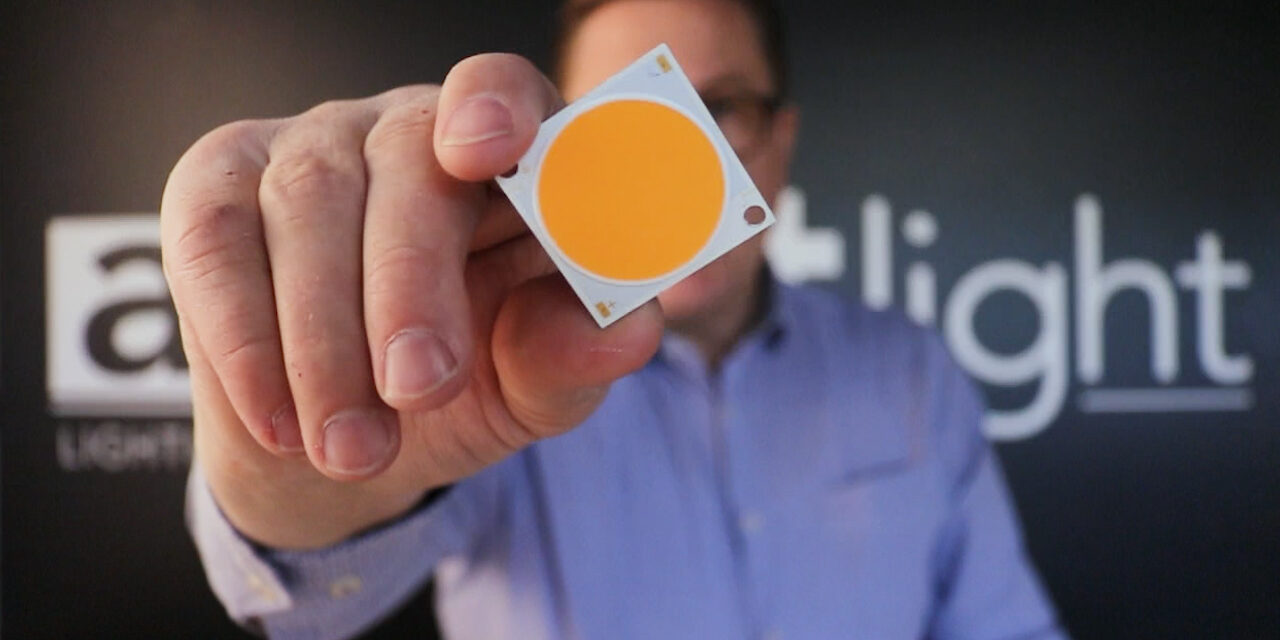Let’s delve deeper into the topic of common LED lighting myths and how to separate fact from fiction. LED (Light Emitting Diode) lighting is still a rapidly advancing technology, and while it offers numerous benefits, it has also become the subject of various myths and misconceptions. Understanding the truth behind these myths is crucial. This way you can make the right decisions and select the right products for the needs of your business.
Myth 1: LED Lights Are Not Energy-Efficient
Fact: LED lights are highly energy-efficient. They consume significantly less electricity compared to traditional incandescent bulbs or fluorescent tubes. LED technology converts much energy into light, resulting in less heat generation and more efficient illumination. LEDs burn at the most efficient rate when “cold”, meaning straight after switching the LED light source ON, until the light output evens out as the luminaire reaches its normal operating temperature. If you have the same LED operating with the same electrical parameters in two different ambient circumstances, the LED in colder ambient conditions will burn more efficiently. When using high-quality LEDs, the difference in lumen output is imperceptible to the human eye. The right kind of cooling for LEDs with heat sink and thermal paste, is still important if you want to design a luminaire with maximum efficiency.
Myth 2: LED Lights Are Expensive
Fact: While LED light sources may have a higher upfront cost than traditional light sources, they are cost-effective in the long run. LEDs last much longer. Often up to 25,000 to 50,000 hours or more, reducing the need for frequent replacements and saving you money on both energy bills and replacement bulbs.
Be also aware when planning to purchase new LED light sources such as LED strips. There is a lot of variation in light output and efficiency values. Selecting a more energy-efficient LED strip will cost you less in the long run, as you will save money on your energy bills.
If you have a smaller project, remember to check outlets. For example, Lightshop.fi has some good outlet components for professional use.
Myth 3: LED Lights Emit Heat
Fact: LED lights produce very little heat. Unlike incandescent bulbs that emit a significant amount of heat, LEDs remain cool to the touch. This not only makes them safer but also reduces the load on air conditioning systems in warm climates. This makes them safer and reduces the load on air conditioning systems in warm climates. However, as mentioned in Myth 1, the cooling of the LEDs is important. The heat coming from the LED is transferred from the base plate of the LED to the heat sink, and the light beam itself does not produce significant heat like the light sources of older technology.
Myth 4: LED Lights Are All the Same
Fact: LED lights come in various types and qualities. There are differences in color temperature (K, Kelvins), brightness (light output, lumens), and quality of light such as color rendering index (CRI, Ra). It’s essential to choose LEDs that suit your specific lighting needs, whether the light is meant for general lighting, ambient lighting, or accent lighting.
For example, LEDs with High Color Rendering are good for applications, when it’s important to illuminate objects in a way to see the colors of the objects as authentic as possible. This is important for example, in clothing stores and in art galleries, where colors are a very important part of the product.
The maximum CRI is 100, which is the light of the Sun. The normal CRI value for LEDs is 80 but you can nowadays find LEDs with a CRI value of 90 or even CRI 97. High CRI LEDs usually have a lower efficiency (lm/W) compared to say a CRI 70 LEDs.
Myth 5: LED Lights Contain Harmful Materials
Fact: LED lights do not contain harmful materials like mercury, which can be found in fluorescent tubes. They are environmentally friendly and more accessible to dispose of safely.
Myth 6: LED Lights Cannot Be Dimmed
Fact: Many LED lights are dimmable. However, not all LEDs are compatible with standard dimmer switches. It’s essential to check the packaging or consult the manufacturer’s recommendations to ensure you have dimmable LEDs and the right dimmer switch for them. You will also need an LED driver which supports your dimming system.
Dimming is also a great way to reduce electricity consumption, as you are able to dim the LEDs when you don’t need full light output (lumen output, abbreviated: lm).
Myth 7: LED Lights Do Not Flicker
Fact: LEDs are less prone to flickering than other lighting technologies, but they can still flicker under certain conditions. Connecting LEDs straight to mains electricity, usually 120VAC or 230VAC, is possible if the LED light source is designed this way but it’s a solution prone to flickering. This is also a less common product design nowadays. LEDs designed this way are, for example, AC COB LEDs.
A more common way to connect LEDs for input of electricity nowadays is to put an LED driver between mains electricity and the LED light source. The purpose of the LED driver is to convert the power (W), current (mA), and voltage (V) to the designed values for the LED light source. This way flickering can be reduced drastically or making it invisible to the human eye. If you desire your LEDs to be “fully flicker-free”, you will need an LED driver labeled as flicker-free. This feature can also be mentioned in the packaging of your LED luminaire if the manufacturer of the luminaire has chosen a flicker-free LED driver
Conclusion for Part 1
LED technology offers numerous benefits, including energy efficiency, long lifespan, and environmental friendliness. By separating fact from fiction, you can fully enjoy the advantages of LED lighting and dispel any misconceptions that may have clouded your perception of this innovative technology. Don’t let myths dim your LED lighting experience; embrace the bright future of energy-efficient illumination.



